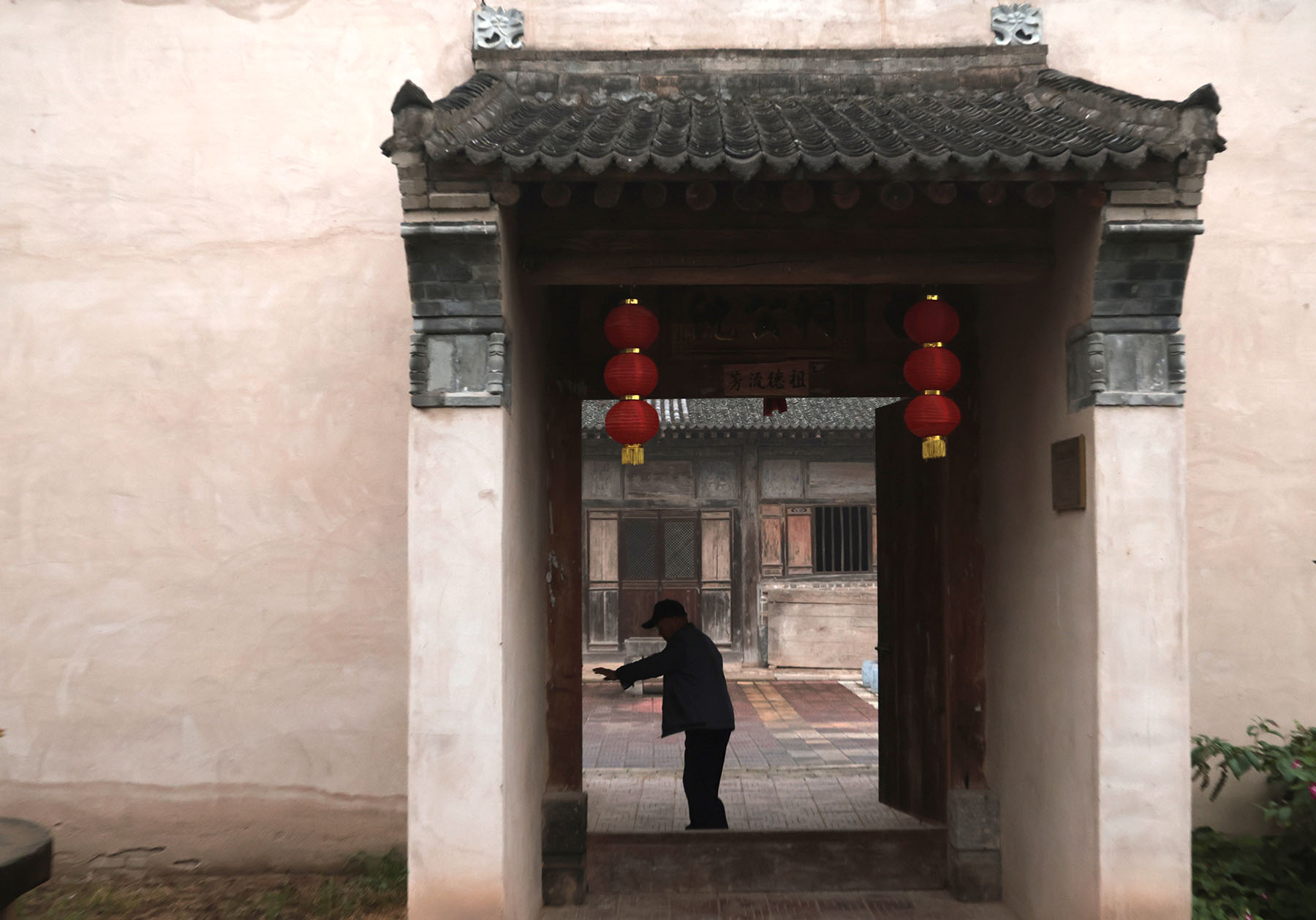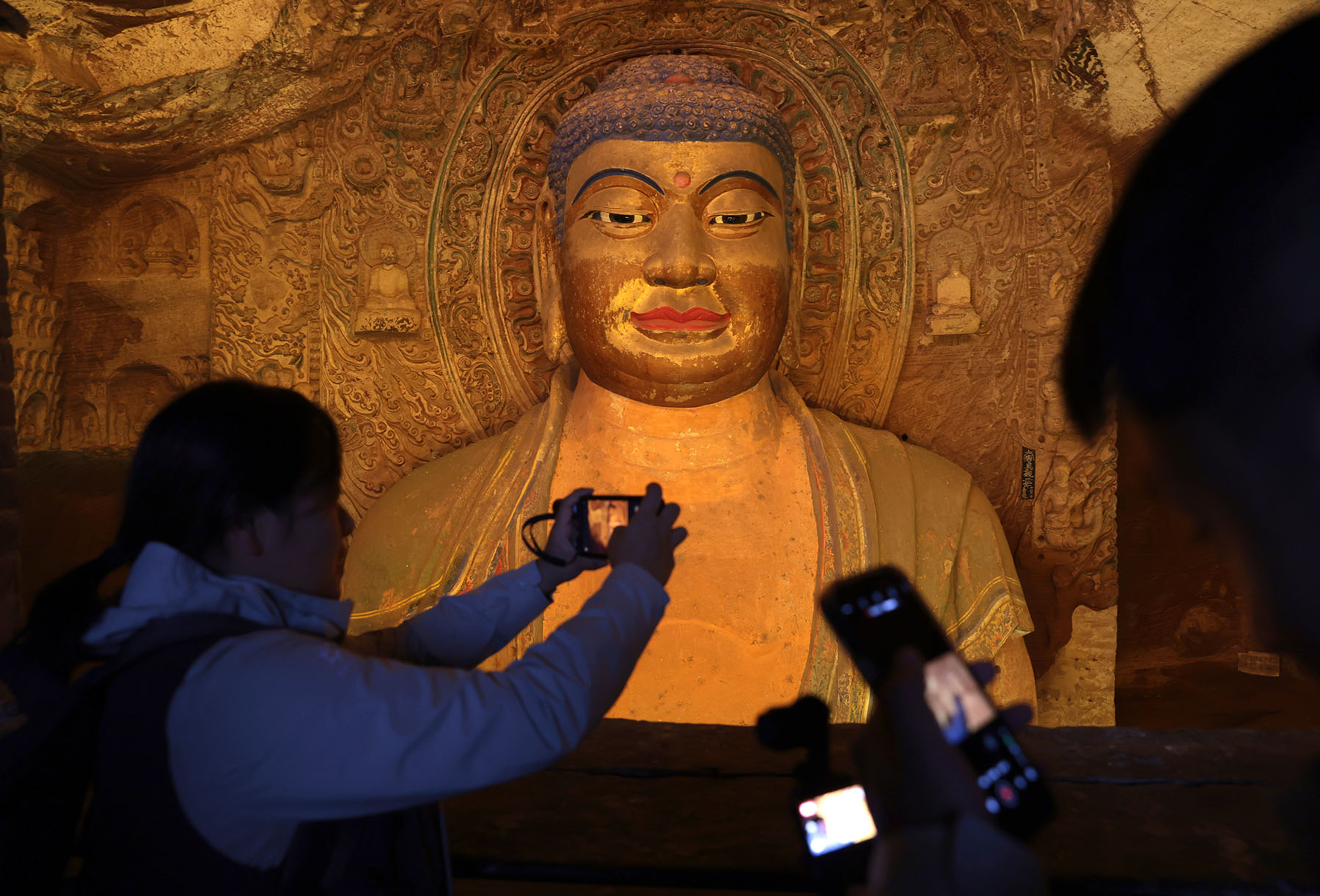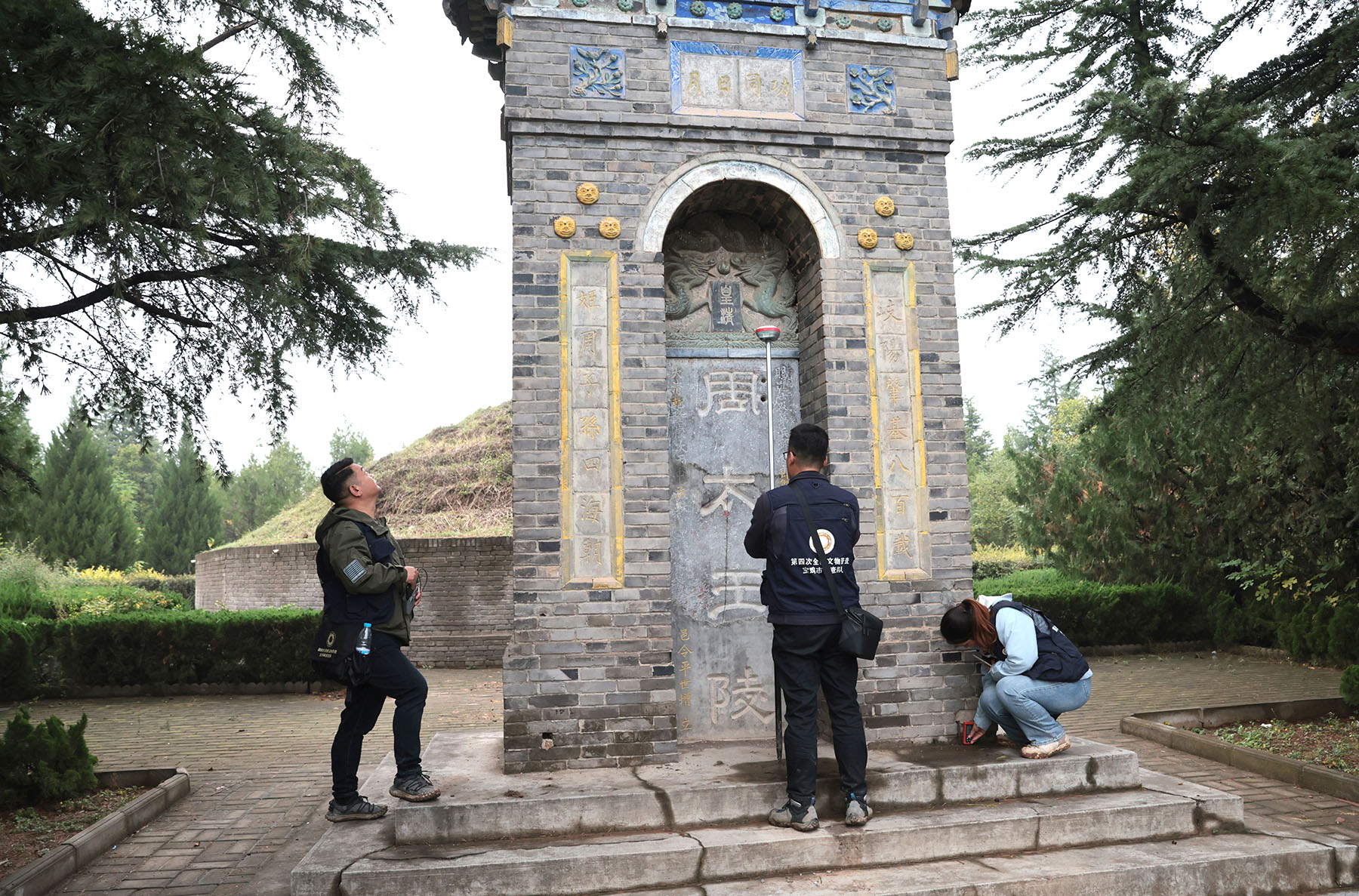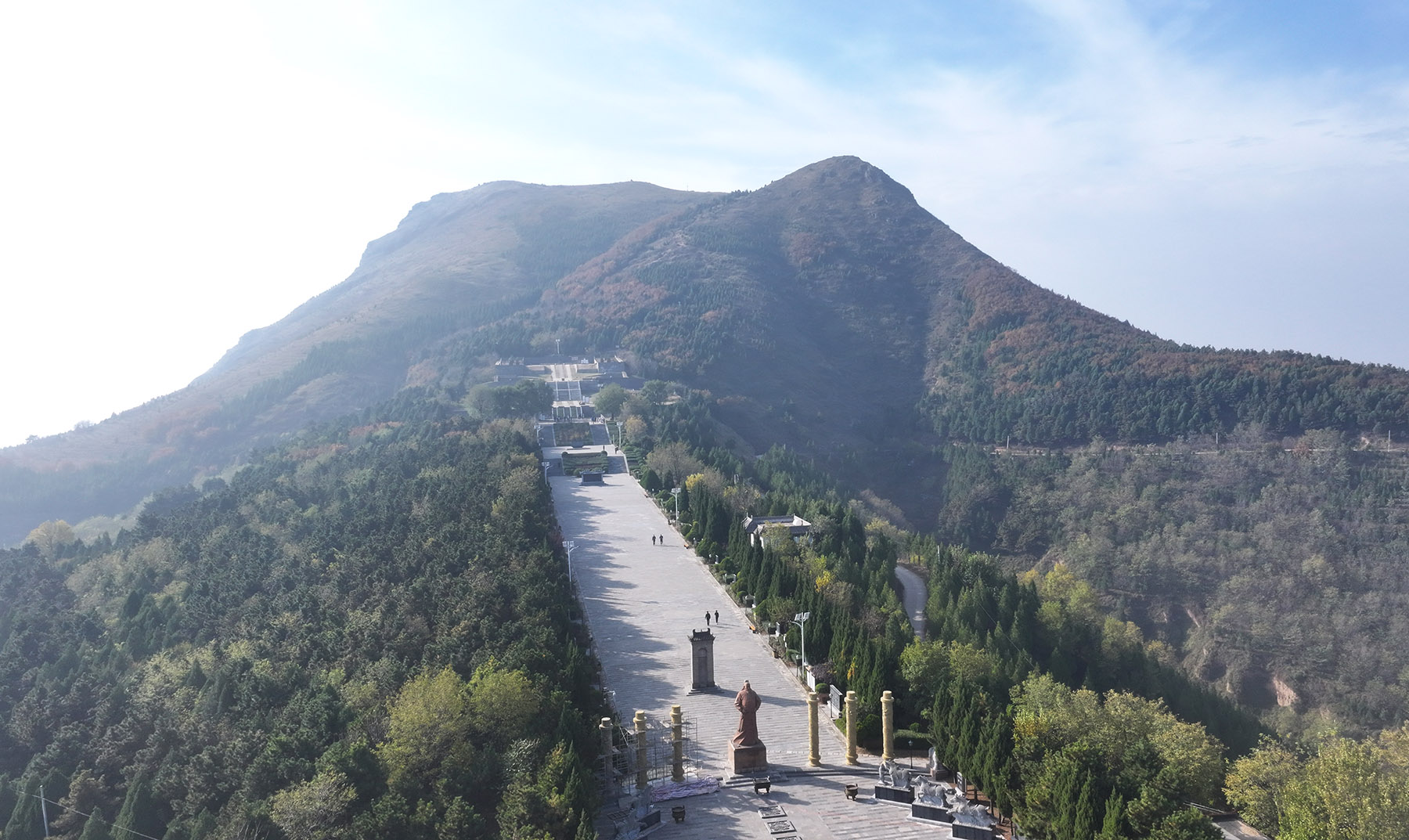Well-equipped archaeologists discover that holding the past in their hands teaches a lifetime worth of lessons, Wang Ru reports in Shaanxi province.

Zhao Xuyang, the 49-year-old director of the Xianyang Archaeology Institute and head of the team of Shaanxi province's Xianyang city for the fourth national census of cultural relics, had, quite literally, lost track.
It occurred as he was with several young team members rechecking the Qinwangdian Site, ruins of buildings in the remote mountains of Chunhua county, Xianyang, dating back to the 4th to 5th century for the fourth national census.
Although they had GPS data, photos and descriptions of the site left by the third census conducted from 2007 to 2011, they struggled to find paths leading to the mountains, since the people who had lived there moved out in recent years, in response to the proposal of returning farmland to forests for ecological, environmental protection. With fewer people traversing these routes, the mountain pathways gradually faded away, causing the sites to become obscure and Zhao and his colleagues to lose their way.
READ MORE: Traditions are at the heart of Spring Festival
Fortunately, they met a local man surnamed Yang in his 70s who had previously resided in the mountains but had left years before, only returning occasionally to gather herbs. After a two-hour hike through the hilly terrain, the man guided them to the site.
"If not for Yang, we would not have discovered the location. Looking around, the environment has changed tremendously compared to photos taken before," Zhao says. "At that time, the site was covered with wild grass but is now part of the forest. By checking the stone architectural components left, we identified the site and completed the census work."

Zhao thanks Yang for his help. "Growing up in the mountains, he has traversed every path, possessing an intimate knowledge of the terrain, which enabled him to lead us to the site," Zhao says, adding that such sites, nestled deep in the mountains, may fall into oblivion without helpers like Yang.
These invaluable heritage sites are swept off dust that allows them to reveal their ancient yet charming visages. In this way, the census is a rare opportunity to record cultural relics in the wide territory and involves passing the experience down from generation to generation.
Zhao says he told his young colleagues to remember the experience.
"It's a meaningful trip. During the next fifth census, my colleagues may not find other people who still know the paths and I will probably retire by then. But they still know how to get to its location and can pass on the information to future generations, so it doesn't disappear," Zhao explains.

New resources
The national census began in November 2023 and will end in 2026. After preparations, field investigations started in May in the cities of Shaanxi. Census takers visit the sites to survey and map them using real-time kinematic devices, take aerial photos with drones and other photos from different angles, measure the sizes of buildings, collect specimens and record all the detailed information in the census database.
In addition to rechecking sites that are already on the list recorded by the third census, members add new sites and gain a better understanding of China's heritage resources. For example, in Baoji, Shaanxi, census takers found a complex of primitive simplicity when they visited Zifu village, Qishan county, Baoji, to check another site where they discovered the ancestral hall of the Shen family from the Qing Dynasty (1644-1911) and added it to their census list.
According to Shen Dekui, who is in his 80s and a descendant of the Shen family, the complex was built in 1833 in memory of their ancestor Shen Jin, a Ming Dynasty (1368-1644) official. The nearly 200-year-old complex was renovated in 2016 through family fundraising and is well-preserved.
"For newly discovered sites, we record their realities and report to the cultural heritage authorities. In the future, they will be identified and possibly classified as sites protected at different levels," Zhao says.
According to Zhou Junli, deputy Party secretary of Zifu village, the village used to have three prominent families — Wang, Zhou and Shen — each with an ancestral hall. However, only the halls of Zhou and Shen families have been preserved.
Zhou says villagers welcome the census and hope ancient buildings will be preserved.
He also mentions that the ancestral hall will be opened to the public to become part of local rural tourist development.
With a picturesque view, the village attracted nearly 10,000 people daily when large fields of yellow rapeseed flowers bloomed last year. Moreover, the millet wine industry is developing and cultural heritage resources will become a new highlight in its rural tourist development, Zhou says.

Professional growth
Li Kunhua, 38, deputy director of the Xianyang Archaeology Institute, has a different experience in this census from the one she participated in before.
When the third census began, she had just begun her career and became a team member who followed leaders' instructions to accomplish detailed tasks. "I was carefree and devoted to completing tasks," Li recalls.
"But this time, as a group leader, I need to pay attention to more issues like the division of labor, making daily plans, designing itineraries and communicating with grassroots officials to apply for their support. It's not as relaxed as last time; it's much more stressful."
She highlights what she has learned from the census. As an archaeologist, she studies ancient tombs and sites in her daily work but didn't have much knowledge about ancient buildings, such as cave temples. The census covers different types of immovable cultural heritage sites, filling the gaps of understanding in the area.
"It's such an honor to take part in the census. The sites you visit in person bring a totally different feeling from reading books," she says. "This way, I have a deeper understanding of the heritage sites in Xianyang and their cultural connotations. The census also improves my abilities significantly. I feel proud being involved in it."
Xing Yuting, 26, a new member of the Xianyang Archaeology Institute, participates in the census for the first time and has become a member of Li's team. She highlights Li's role in the team, especially during their visit to the Shijiayuan Site from the Western Zhou Dynasty (c. 11th century-771 BC) in Chunhua county.
Hidden under layers of terraced fields, not yet excavated, the site could only be identified by its sections which contained pottery pieces and animal bones. Census members visited the area twice and hiked in the fields but failed to find it, leaving them frustrated.
ALSO READ: Carving out a symbol of virtue
"At that time, Li encouraged us by repeatedly saying 'It's no big deal. If we cannot find it today, we'll come tomorrow and find it,'" Xing recalls. "She convinced us to view our setbacks with a lighthearted perspective and, ultimately, we succeeded."
To Xing and other team members, Li "shines like the sun" within the team. "I learned so many things from Li, an experienced archaeologist who teaches us lessons we cannot learn in a classroom. Her ways of communicating and treating people also guide my growth," Xing adds.
Bai Xuefan, 23, a senior archaeology major at Northwest University in Xi'an, Shaanxi, also participates in the census. He shares Xing's view that the census work imparts knowledge that cannot be learned in a classroom.
"We are told in class about pottery pieces from different eras but only when we discover the real pieces at the sites, hold them and identify them can we recognize their differences," Bai says.
He also learns from senior members of the team. "Many of our members are approaching retirement age but they hike in the mountains all day with us," he adds. "I have learned so many things from them. In some ways, the census work is a kind of inheritance."
Contact the writer at wangru1@chinadaily.com.cn


